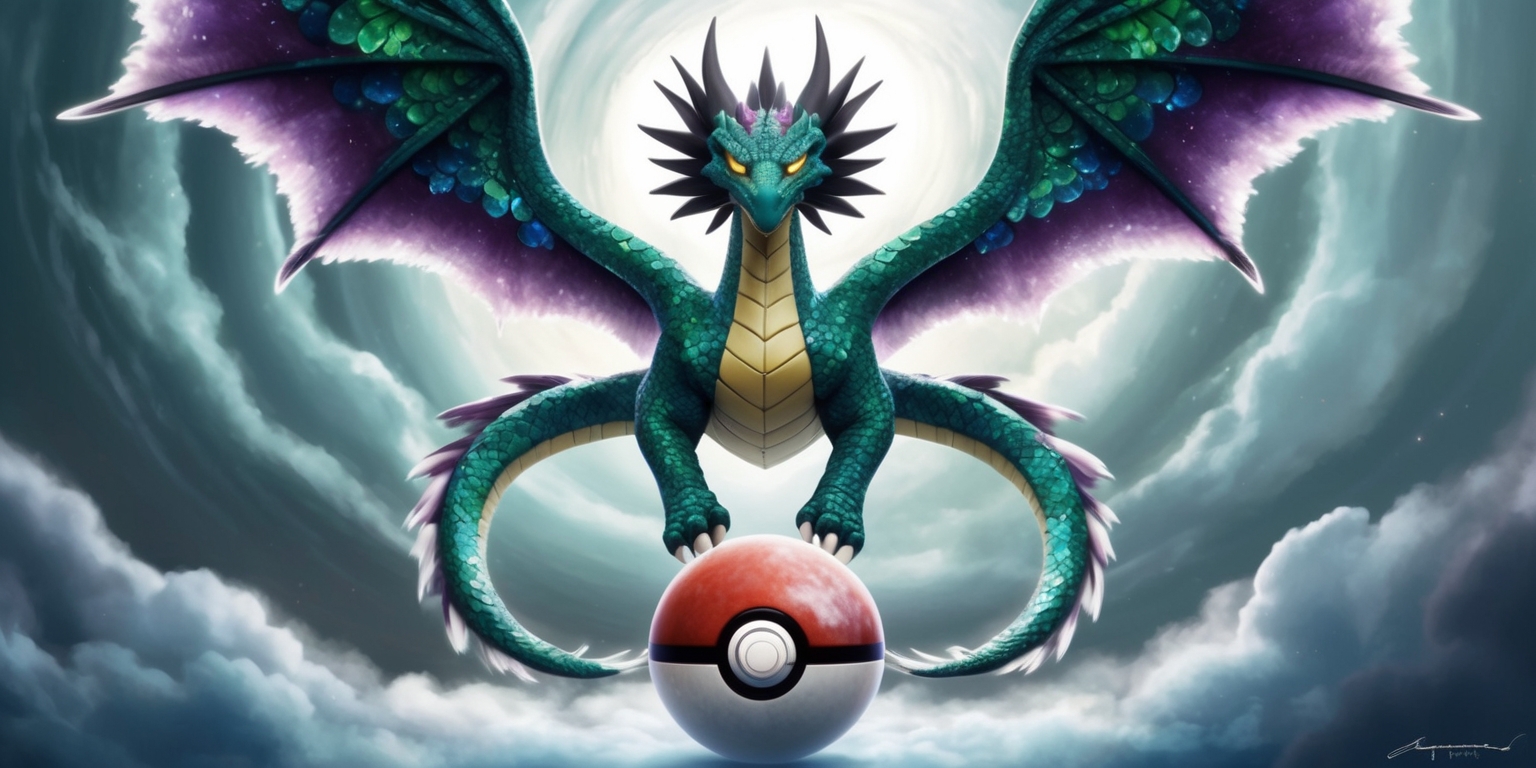
The world of Pokémon Go is filled with wonders and epic challenges, and among them, Dragon-type Pokémon stand out with their awe-inspiring power, complex mechanics, and captivating designs. Enthusiasts have long been drawn to these creatures not only for their raw statistical might but also for the unique gameplay experiences they offer. As players navigate the evolving landscape of Pokémon Go—with new seasons, evolving meta strategies, and innovative in-game features—Dragon-types continue to command attention. They are emblematic of progression and mastery in the game, offering both seasoned trainers and newcomers a chance to witness excellence in action and to engage in dynamic battles that test one’s tactical skills and adaptability.
Exploring the World of Dragon-type Wonders
Dragon-type Pokémon have long been heralded as some of the most formidable choices available in Pokémon Go. These creatures not only embody a rich heritage and mystique but also offer a range of strategic benefits that players have come to appreciate. Their stat distributions and designated roles in competitive battles echo moments of epic storytelling within the game’s universe. With nearly 884 Pokémon available as of March 2025 out of a larger family of 1025, the selection includes a wide spectrum of regular and Mega-evolved forms—all Enhancing the game's intricate narrative universe. Enthusiasts must balance resources like Candy and Stardust to harness the full potential of each Dragon-type, knowing that every choice can influence their journey through the evolving meta of Pokémon battles.
Distinct Characteristics of Dragon-type Pokémon
In the realm of Pokémon, Dragon-types are known for being elusive, highly coveted, and possessing superior battle capabilities, often requiring a significant investment of experience points to fully evolve. Their mystique comes not only from their rarity but also from the complex interactions they have with other types, resulting in a dynamic battlefield where every matchup is a calculated risk. Their high base stats have made them a staple in competitive formats, especially in the higher tiers like Master League. While their vulnerabilities to specific types such as Ice and Fairy bring their own strategic challenges, these inherent weaknesses are balanced by the sheer magnitude of their offensive prowess, allowing trainers to shape their teams with deliberate synergy in battle.
Investigating Legendary and Non-Legendary Potential
The journey of mastering Dragon-types in Pokémon Go involves understanding both legendary and non-legendary forms. Legendary Pokémon are conventionally seen as the elite among the creatures due to their impressive stats and unique abilities. However, the landscape is far more nuanced. Some non-Legendary entries, including pseudo-Legendary species, can match or even surpass legendary counterparts in particular scenarios, thanks in part to their cost-effective evolution paths. Budget-conscious trainers find particular solace in these alternatives, as the investment needed to power them up is generally less demanding than that for legendary Pokémon. Whether you are participating in Master League battles or tackling raid challenges, it is crucial to recognize that both legendary and non-legendary Dragon-types possess distinct roles that can reverse the tide of battle when used with precision.
Unveiling the Might of Haxorus

Haxorus stands out as a quintessential example of a non-legendary Dragon-type that commands attention on the battlefield. This mono-Dragon creature boasts an impressive attack stat that can be directly compared to some of the most powerful factions, elevating its status among other preferred choices. With a moveset featuring fast moves like Dragon Tail and charged moves such as Breaking Swipe and Dragon Claw, Haxorus becomes particularly effective in raid encounters. The simplicity of being a mono-Dragon means that while it lacks additional type-based coverages, it more than compensates with sheer offensive output. In competitive player-versus-player encounters, its vulnerabilities call for tactical play, but the excitement it brings to battles makes it an inspiring option for trainers willing to embrace both risk and reward.
Garchomp: The Dual-Force Creature
Garchomp captivates fans by merging the elemental powers of Dragon and Ground, a combination that offers both versatility and significant tactical depth. The unique dual typing enhances its role on the battlefield, particularly when equipped with moves like Dragon Tail for fast strikes, Outrage for relentless charged damage, and Earth Power to exploit its Ground-type advantage. Known for its potential in Mega Evolutions, Garchomp's dynamic presence is felt strongly in both raid challenges and competitive battles. Its distribution of stats allows it to function in a variety of roles, whether as a hard-hitting attacker or as a flexible option in strategic line-ups. Yet, trainers must be mindful of its susceptibility to Ice-type moves, a double weakness that demands thoughtful support and synergy within the team.
The Fierceness of Salamence
Salamence exemplifies the raw intensity that Dragon-type Pokémon can offer, blending elements of fire and flight to create a creature of formidable reputation. Possessing the unique dual typing of Dragon and Flying, Salamence is celebrated for its aggressive movesets, including fast moves like Dragon Tail, and charged options such as Fly and Outrage. While its coverage abilities fall short in certain defensive aspects, the sheer force it delivers in key battle moments establishes its place among the preferred choices for raid attackers. Trainers who seek to include Salamence often enjoy its visual appeal and the dynamic energy it brings to battles. Despite its shared vulnerabilities with many Dragon-types, its high offensive output and electrifying aesthetic have continually secured its relevance in competitive play.
Dragonite: An Enduring Classic
Dragonite represents an iconic case of a Dragon-type Pokémon that continues to earn accolades over time. Its combination of Dragon and Flying typings not only cements its legacy but also offers a balanced mix of agility and formidable strength in battles. Dragonite has remained a constant force within Master League engagements, crafting its reputation through a versatile moveset that includes Dragon Breath and Dragon Claw, complemented by Superpower for enhanced coverage. This reliable combination allows it to press a relentless offense against various opponents. While its stat profile might suggest a lower offensive magnitude compared to some pseudo-Legendaries, its accessibility and wide-ranging effectiveness across battle scenarios have made it a cherished asset among trainers who admire both tradition and performance in Pokémon Go.
Dragapult: A Fusion of Mystery and Power
Dragapult originates as a dynamic blend of Dragon and Ghost attributes, resulting in a unique combatant that brings unexpected layers to battle strategies. Its inherent dual nature allows it to bridge two powerful roles, making it capable of countering specific threats with versatility rarely seen in other Dragon-types. With an arsenal that includes fast moves like Astonish, which may be swapped for Dragon Tail to focus more on its Dragon aspect, and charged moves like Breaking Swipe and Shadow Ball, Dragapult exhibits an unconventional yet effective combat style. Despite its somewhat lower bulk relative to its counterparts, it stands as a critical member in both raid compositions and Master League line-ups. Trainers who incorporate Dragapult benefit from its blend of spectral tactics and draconic force, inevitably shifting the dynamics of the fight.
Strategic Gameplay in the Dragon Arena
The strategic depth that Dragon-type Pokémon contribute to competitive battles cannot be understated. In the realm of Master League and other high-tier encounters, these creatures consistently prove their worth by leveraging high attack stats and compelling movesets. Their interactions with other types create a gameplay environment characterized by calculated moves and counterplays that resemble an intricate game of strategy and foresight. Notably, the advantages of these Pokémon are counterbalanced by notable vulnerabilities such as susceptibility to Ice and Fairy moves, which coaches must navigate with a balanced approach. The continuous evolution of meta strategies, powered by season changes and updates, ensures that trainers remain engaged, experimenting with diverse teams that refine their tactical approaches during every critical raid battle or Go Battle League match.
Mechanics and Training in the Dragon Domain
Mastering Dragon-type Pokémon in Pokémon Go extends beyond assembling a formidable team—it involves an in-depth understanding of how training, resources, and evolution paths interplay to maximize potential. With nearly 1025 total Pokémon available in the game and a distinct subset available for each type, optimizing the performance of Dragon-types requires strategic decisions about fairness and resource allocation. Owning to their high XP and Candy requirements, trainers must embark on extensive training regimens to achieve peak battle abilities. In addition, the intricate balance between upgrading legendary forms and investing in non-legendary, cost-efficient pseudo-Legendaries calls for analytical foresight. Players often experiment with diverse moves and effects during Forays into extensive raid challenges, ensuring that they adapt to evolving battle conditions while maintaining an edge in competitive gameplay.
Tactical Adaptations and Competitive Dynamics
Within competitive formats, Dragon-type Pokémon not only deliver powerful moves but also serve as strategic cornerstones around which teams are built. Trainers must analyze their lineup rigorously, considering factors like move set efficiencies, bulk, and inherent strengths to address the vulnerabilities these Pokémon carry. The interplay of elemental types creates an environment where slight adjustments—such as switching out a fast move or optimizing a charged counterpart—can drastically alter the outcome during intense match-ups. Dragon-types, with their blend of high offensive and balanced defensive capabilities, provide ample room for strategic maneuvering, particularly in the ever-evolving meta of both the Master League and featured raid battles. As the competitive scene shifts with seasonal updates and new Pokémon introductions, players continuously adapt their strategies to maintain a tactical advantage while celebrating the allure of these timeless creatures.